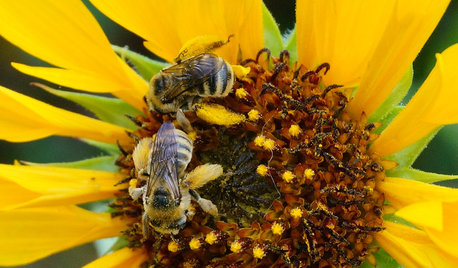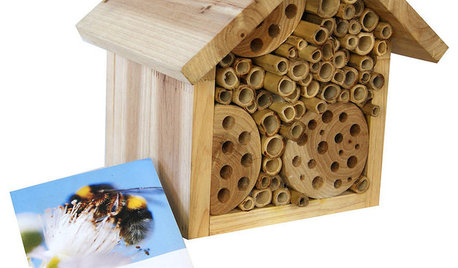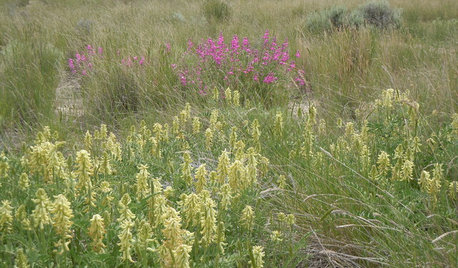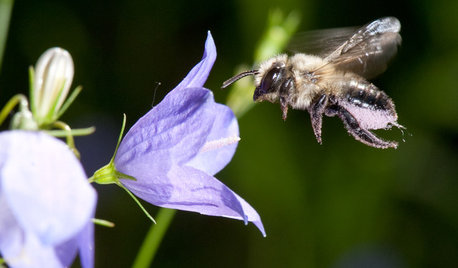Bees vs. Yellow Jackets
finn21
16 years ago
Related Stories

EARTH DAY12 Entertaining ‘Bee-haviors’ of Native Bees
The parade of pollinator antics is another reason to create a garden that nurtures native bees
Full Story
GARDENING GUIDESSmall Carpenter Bees Are Looking for a Home in Your Plant Stems
Provide flowers and nesting sites in your garden for this beautiful, tiny, metallic blue wild bee — your plants will thank you
Full Story
GARDENING GUIDESInvite Mining Bees to Your Garden by Planting Their Favorite Plants
Look for mining bees (Andrena) pollinating woodland wildflowers in U.S. gardens this spring
Full Story
PRODUCT PICKSGuest Picks: 20 Ways to Play Garden Host to Birds and Bees
Perch some of these houses and feeders around your garden, and watch pollinators and feathered friends flock in
Full Story
GARDENING GUIDESGreat Design Plant: Canadian Milkvetch Draws Bees and Birds
Its seedpods have visual appeal, but winged creatures are lured to Astralagus canadensis for more than its looks
Full Story
YELLOWColor of the Week: Celebrate Summer With Sunny Yellow
Bring home some of that glorious summer sunshine
Full Story
DECORATING GUIDESGo Bold with Black and Yellow
Buzzz: Black and Yellow Aren't Just for the Bees
Full Story
GARDENING GUIDESPut Out the Welcome Mat for Leafcutter Bees in Your Garden
Provide a diversity of flowering plants from spring through fall for these charismatic native bees, and you won’t be disappointed
Full Story
GARDENING FOR BUTTERFLIESGardening for the Bees, and Why It’s a Good Thing
When you discover how hard bees work for our food supply, you may never garden without them in mind again
Full Story
GARDENING GUIDESInvite Cellophane Bees to Your Garden by Providing Patches of Bare Soil
Look for cellophane bees (Colletes) pollinating flowering trees and shrubs in U.S. gardens this spring
Full Story







cnetter
Skybird - z5, Denver, Colorado
Related Professionals
Fort Lee Landscape Architects & Landscape Designers · White Oak Landscape Architects & Landscape Designers · Duarte Landscape Contractors · Elmhurst Landscape Contractors · Glendale Heights Landscape Contractors · Hawthorne Landscape Contractors · Mission Bend Landscape Contractors · Overland Park Landscape Contractors · Richmond Landscape Contractors · Westford Landscape Contractors · Whittier Landscape Contractors · Northlake Landscape Contractors · Casselberry Landscape Contractors · West Hartford Solar Energy Systems · Weymouth Solar Energy Systemsbillie_ladybug
david52 Zone 6
Skybird - z5, Denver, Colorado
digit
emagineer
digit
cnetter
finn21Original Author
digit
jchaber
emagineer
digit
bpgreen
emagineer
billie_ladybug
twiterbee
jclepine
irisgirl